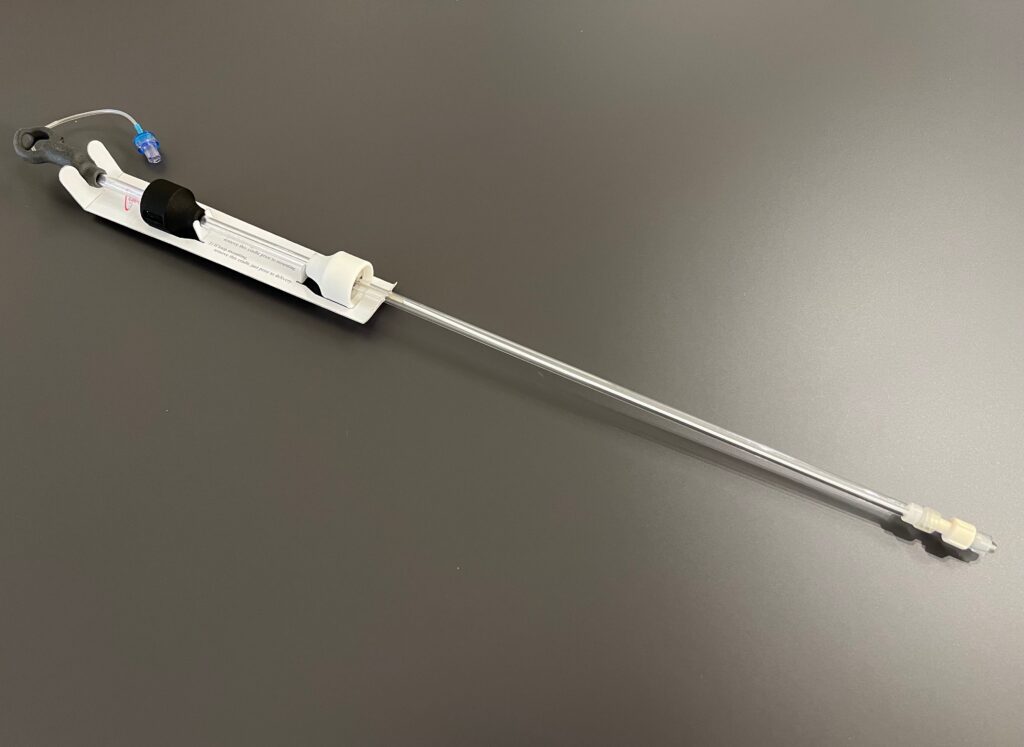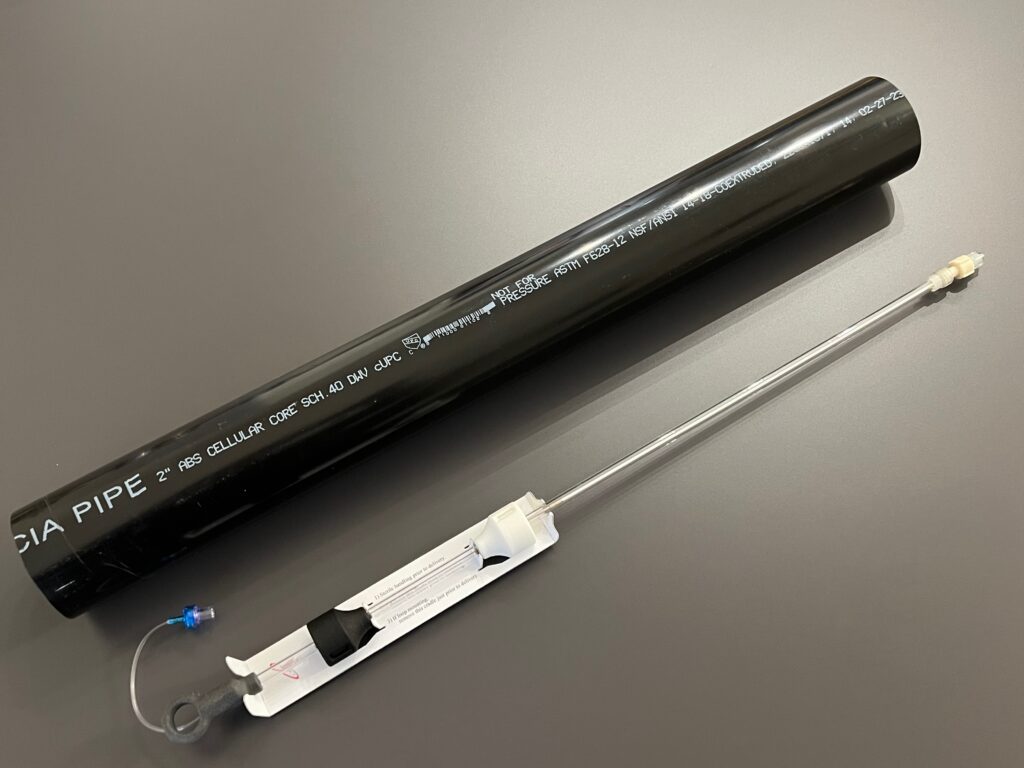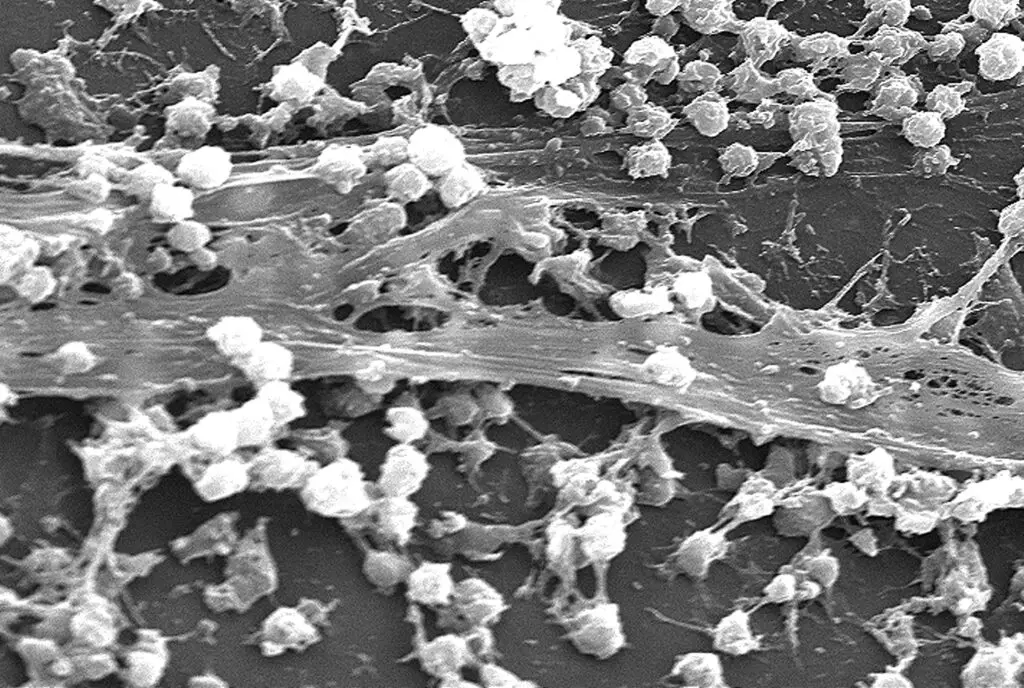
Innovating No-Touch, No-Exposure Vascular Implant Solutions

Photos of the pre production prototype: 25cm x 5F SL.
The CleanPICC system is designed to dramatically reduce Central Line-Associated Bloodstream Infections (CLABSI) by leveraging a no-touch, no-exposure approach, which has so far been limited to devices for operating room use.
Historical examples of no-touch no-exposure surgical technologies include the following examples:
- Intraocular Lens (IOL) Cartridges: around the year 2000, the transition from manually handled IOLs to sterile, preloaded injector systems in cataract surgery has led to the reduction in postoperative endophthalmitis, from 1.21% to 0.028%, representing a ~98% decrease in contamination-related infections (1). This substantial decrease underscores the effectiveness of no-touch, no-exposure techniques in preventing infections during high-risk procedures in controlled operating room (OR) environments. Furthermore, in 2024, where clinically feasible, IOL cartridges have become the standard-of-care.
- Keller Funnel in Breast Implant Surgery: The use of the Keller Funnel, a no-touch device for inserting breast implants, reduced the incidence of capsular contracture—a complication often associated with subclinical infections—by up to 87% compared to traditional methods (2). This further supports the principle that minimizing direct handling and exposure of implants can significantly reduce the risk of infection, again demonstrated in the controlled environment of the OR.
- Endovascular Aortic Repair (EVAR/TEVAR): In vascular surgery, endovascular methods, which utilize a no-touch, catheter-based technique, have shown lower early infection complication rates compared to traditional open aortic repair (OAR). The less invasive, no-touch nature of EVAR/TEVAR reduces the risk of intraoperative contamination and early postoperative infections, further validating the effectiveness of no-touch techniques in surgical settings (3).
- Peel-Away Introducer Sheaths: The use of peel-away sheaths in catheter placements, first described in 1987 by Rich et al. (4), are now routinely utilized in both OR and bedside procedures, has been associated with an approximate 80% reduction in contamination rates compared to more traditional methods. This design minimizes handling and exposure of the eventual catheter implant via a delivery tube that is fully removed, aligning with best practices in CLABSI prevention and further validating the no-touch approach taken by CleanPICC (5).
PICC/CVC delivery vs OR delivery
Unlike the controlled environment of an operating room, PICC and CVC placements are typically performed at the bedside in ward settings by a single operator. This setting presents additional challenges, including increased operator demands, increased risk of environmental contamination, variability in resources, variability in set-up ergonomics, and generally much less control over the procedural environment. Improvements in workflow, time, exposure, and efficiency via CleanPICC are likely to have an even greater impact on reducing CLABSI risk than what has been observed in SSI using comparable OR-based technologies which are utilized in high-resource, maximally controlled hospital environments in contradistinction to the bedside, where these advantages will have even greater utility.
Reducing Procedural Variability with CleanPICC
The innovative design of CleanPICC not only ensures a sterile, no-touch, no-exposure approach but also will significantly reduce procedural variability, similar to the impact seen with the use of IOL cartridges in cataract surgery and the Keller Funnel in breast implant procedures. These prior and prooven technologies have demonstrated that minimizing manual handling and standardizing the delivery process lead to procedural efficiencies, more consistent outcomes and reduced complication rates. the CleanPICC design applies these principles to vascular access, to ensure that every procedure achieves the highest level of asepsis and precision, regardless of the environment or operator experience.
CleanPICC development aims: OR-Level Asepsis, Expanding Front-Line Care, and Market Growth
The CleanPICC system is designed to deliver a sterile implant under any condition, ensuring OR-level asepsis even in compromised healthcare settings such as MASH and throughout the developing world. Traditional bedside vascular access procedures are prone to contamination, but CleanPICC’s fully enclosed, no-touch, no-exposure design is equipped to maintain sterility in any environment.
Through consistent sterile implant delivery, CleanPICC aims to enhance patient safety and care delivery even in the most challenging conditions. Its innovative design taps the growing global demand for inexpensive, safe, reliable, compact sterile solutions, expanding the market from advanced hospitals to austere field operations. This broad capability positions CleanPICC to drive significant market and revenue growth, while establishing a new standard in maximum sterile barrier technique for vascular access.
Conclusion:
No-touch, no-exposure technologies have consistently demonstrated significant reductions in OR-related infectious complications across various medical fields. The success of these technologies provides a strong precedent for the potential effectiveness of CleanPICC. Given the additional challenges posed by the bedside ward environment, the design of CleanPICC—eliminating catheter implant and delivery guidewire contamination leading to CLABSI— indeed has the theoretical potential to achieve a major reduction in CLABSI. While we are confident in this claim, we fully acknowledge that prospective studies following FDA approval will ultimately be required to validate the full extent of CleanPICC’s positive impact in diverse clinical settings.
(1) https://www.ncbi.nlm.nih.gov/pmc/articles/PMC1771777/
(2) https://pubmed.ncbi.nlm.nih.gov/36448016/
(3) https://pubmed.ncbi.nlm.nih.gov/15351191/

The above image demonstrates the CleanPICC set up and ready to deliver. The entire system includes (1) a standard IV pole, (2) a re-usable CleanPICC hangar, and (3) the single-use disposable CleanPICC cartridge. The Cartridge also includes a mounting loop so that it could be used without the hanger. The support system allows a catheter and delivery guidewire to be ready to use with no prior set up needed. The magnetic handles allow independent manipulation of the catheter and guidewire through the sterile enclosed delivery tube. The catheter and guidewire are delivered straight from their sterile packaging into the venous introducer sheath and bloodstream, with zero touches and zero ambient exposure, saving time and eliminating implant contamination risks.
Infectious Catheter Biofilm: EM image

If you are a medical professional who performs vascular access, please reach out to our team as we would love the opportunity to get our pre-production prototype into your hands and gain your feedback on our product design.
